Apple Scionwood
Welcome to our collection of apple scionwood. We grow over 130 varieties of apples and offer scions for grafting from most of them.
For filtered search - we have apples organized by categories and tags. Use the filter below to select as many categories and tags as you want to narrow down your search. For the most specific results, select just one category and multiple desired tags. Full functionality is coming soon - we are continuing to update each variety with all the correct categories and tags. Feel free to reach out with questions about specific varieties.
Categories:
Cider apples (good for hard ciders)
Dessert apples (also known as snacking apples, good for fresh eating)
Baking/saucing apples (also known as culinary apples, good for canning, preserving, baking, and cooking)
Red Flesh (red or pink flesh on the inside)
Tags:
Cold hardy (good for extreme cold or Northern climates)
Disease-resistant (has moderate to strong resistance to one or more common apple diseases)
Harvest period early, mid, or late
Heat or low-chill tolerant (good for extreme warmer or Southern climates)
Heavy producer
Pollination Groups A through E
Ordering is now open for this season. Order now for shipping between January and April 2025. Questions? Please contact Christina Fordyce at 503-930-8280 or fordycefarminc@gmail.com.
Scion wood is sold by the piece, except for some varieties that are available in bulk quantities of a 20-pack. We always seek to provide sticks that are close to 12” and pencil thickness at the base but every variety grows differently and so thickness varies.
We ship only within the United States. We do not ship internationally. Rootstock does not ship to California.
Return/Refund Policy: We do not offer returns or exchanges on scionwood or rootstock. We have a 30-day return policy on our clippers (must be unused and returned in original packaging. Return label must be requested). If we have made an error on the scionwood variety you have ordered, we will refund or replace the incorrect item. Claims for errors in your order must be presented within 30 days of receipt of your order. Claims must include a picture of the error and sent to us by email at fordycefarminc@gmail.com. Failure to assert claims within 30 days after order receipt renders this warranty null and void.

This late August apple is disease resistant, productive and vigorous. A 1930s German apple has Cox Orange Pippin and the Duchess of Oldenburg as its parents. It’s an apple with a margarita trapped inside. It’s so juicy it drips down your chin and yet it’s still firm. It’s so refreshing with its limeade flavor.
Categories: cider apple, dessert apple, baking/saucing apple
Tags: Heat/low-chill tolerant, Disease-resistant, Heavy producer, Harvest period mid, Pollination Group B

This is an old American variety from the 1750s and Massachusetts. It’s a flavorful apple that is also fairly disease resistant and reasonably productive. It was a very popular apple in New England until a terrible freeze in the 1930s wiped out many of the trees. We’ve found this apple to be very resilient in the Pacific Northwest. The scion wood is average and we’ve had great success grafting this apple.
Categories: dessert apple, cider apple
Tags: Disease resistant, Heavy producer, Harvest period late, Pollination Group D

From the Netherlands of the 1850s. We’re super fans of these apples. They start out tart but age into a true nutty but intensely apple flavor. These also make a fantastic single varietal hard cider. The trees are productive and highly disease resistant. They are vigorous growers and graft easily. The apples are fantastic eaten fresh, baked or fermented. We think these should be on every homestead and in every commercial orchard.
Categories: dessert apple, cider apple, baking/saucing apple
Tags: Disease-resistant, Heavy producer, Cold hardy, Harvest period mid, Pollination Group C

From 1740 England. We love their intense flavor, nuttiness and bit of spice. In England these are popular for apple charlotte. It is one of the parents of the legendary Cox Orange Pippin. These produce every other year but their apples are almost always perfect. They resist all the fungal diseases here. We’ve had success grafting them. They are a very late apples, among the last to ripen in our orchard.
Categories: dessert apple, baking/saucing apple
Tags: Disease-resistant, Heavy producer, Harvest period late, Pollination Group D

Bramley’s Seedling: this is a classic English cooking apple. They are great for growers as they’re productive, vigorous trees. The apples are very resistant to disease and often grow quite large. They really are among the best apples anywhere for sauce and pies. The scion wood is hardy and fairly thick. We have bulk quantities of the scionwood. Contact us for pricing on orders over 60 pieces.
Categories: baking/saucing apple, cider apple
Tags: Disease-resistant, Heavy producer, Harvest period mid, Pollination Group D

From Normandy, France 1598. These are prized by French chefs for baking. Hard, crunchy and intensely lemony. These are late season apples with a lovely lobed shape. They make a wonderful single varietal cider. We find these apples modestly challenging to grow organically being somewhat susceptible to scab and scale. We have had much success grafting this variety.
Categories: baking/saucing apple, cider apple
Tags: Harvest period late, Heavy producer, Pollination Group D
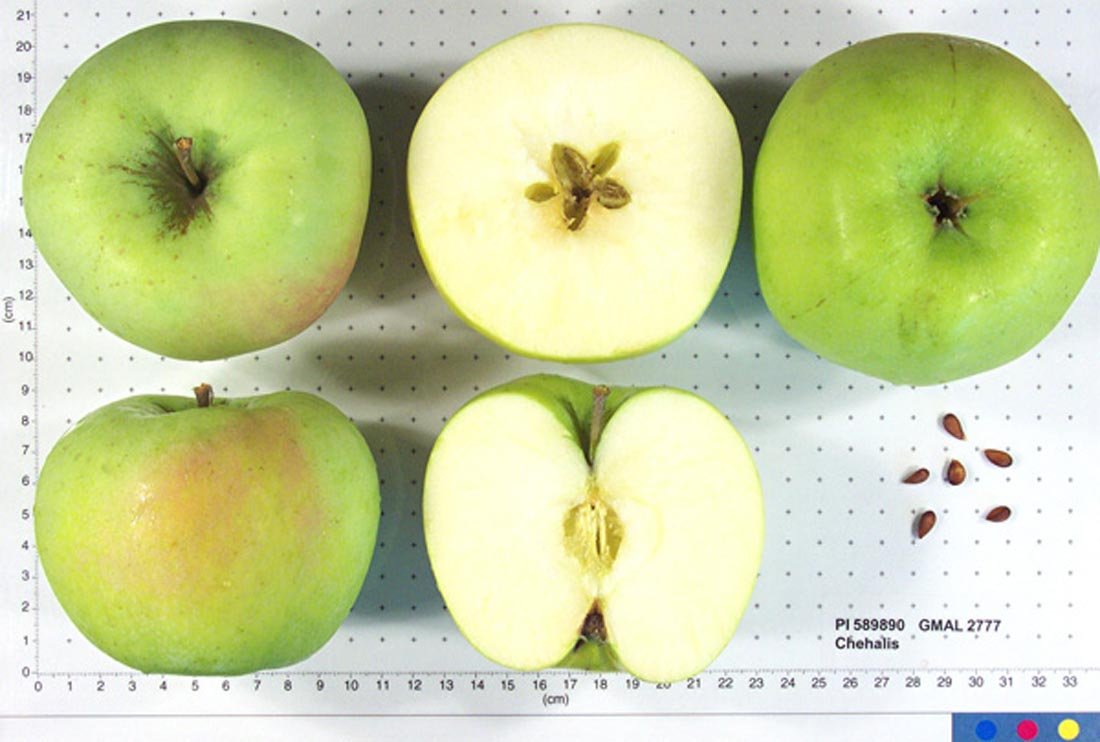
These originated in the 1930s from a seedling of a Golden Delicious raised by Lloyd Lonburg of Oakville, WA - so these are a PNW native! They bruise easily, so handle them with care! Great for fresh eating and pies. Lasts about 2 months in cold storage.
Note: this apple scionwood is harvested from Fordyce Farm inc. that we operate in Salem, OR. Fordyce Farm inc. is not certified organic.
Categories: dessert apple, baking/saucing apple
Tags: Disease-resistant, Heavy producer, Harvest period early, Pollination Group D

A lovely round apple with a slight orange cast. Introduced in 1825, it’s considered the benchmark for apple flavor. They are notoriously disease prone but we've found they are easier to get nice apples from than many others with little disease resistance.
Categories: dessert apple, cider apple, baking/saucing apple
Tags: Heavy producer, Harvest period mid, Pollination Group C
Bitter, disease resistant cider apple. A highly favored bitter cider apple. These are flavorful and disease resistant. The trees are slow growing and biannual bearing. The produce very few pieces of scion wood each year.
Categories: cider apple
Tags: Disease-resistant, Heavy producer, Harvest period late, Pollination Group D
Devonshire Crimson Queen is extremely rare in the U.S. We adore these apples as they are delicious, early, disease resistant and seem unmolested by insects. These apples start out fairly sharp and get sweeter as they sit. Late in their season, or after a month or storage, they have a distinct berry flavor. On the tree they will look as though they range in color from solid red to totally green. Their season stretches over several weeks and so we start out picking only the solid red and come back every few days to pick just those. Only in the last pickings should those less red apples be harvested. When these are deepest red, especially in cooler seasons when they can ripen slowly, they will have lovely dark pink blush inside the flesh that starts near the skin and can continue all the way to the core. Their strawberry flavors get stronger later in their season and after storage. These apples have been fabulous every single season regardless of new insects, hail, heat waves, massive rain and any other weather anomaly we’ve experienced.
Categories: dessert apple, cider apple, Red Flesh
Tags: Disease-resistant, Heavy producer, Harvest period early, Pollination Group B
These small apples are rather oval-shaped and the size of a golf ball or smaller. They are a nice deep red and have a bloom. These are sweet-sharp and a little bitter and is best used for jellies, as a sweet-sharp in ciders, or as an ornamental. (We will often use it in holiday centerpieces!) It originated in St. Petersburg, Russia in the 1890s. Its heavy pollen and long bloom period makes it an excellent pollinator for either home orchards or large scale operations.
Categories: cider apple, baking/saucing apple
Tags: Disease-resistant, Heavy producer, Harvest period mid, Cold hardy
An 18th century Russian apple. These early apples are wonderful for sauce and are recommended for drying. These are quite productive trees but are fairly disease prone. They have improved under organic care but they should be watched closely for fire blight. They tend to have less scab than some but they also will drop quickly if there is excess heat. They add nice aromatics to a cider.
Categories: cider apple, baking/saucing apple
Tags: Heavy producer, Harvest period early, Pollination Group B
These are intensely flavored late season apples. They are entirely russet covered. The trees are disease and pest resistant and are biannual bearers. The apples taste like an amazing, complex, cider and are quite tart. They also ferment into the most complex, single varietal cider we’ve made. It’s a classic English apple from the Victorian era. As a dessert apple they are quite tart, but I would eat them with a caramel sauce or served with a soft cheese and nuts to balance and mellow the strong flavor.
Categories: cider apple, dessert apple
Tags: Disease-resistant, Heavy producer, Cold hardy, Heat/low-chill tolerant, Harvest period late, Pollination Group C
A sweet apple with juicy white flesh and a crisp texture. We find these to be delicious to eat and nice for the base of a hard cider but their susceptibility to fungal diseases makes them a challenge in our warm wet springs. They are, however, resistant to blight and rust. Early to bloom but late to ripen.
Categories: dessert apple, cider apple, baking/saucing apple
Tags: Disease-resistant, Heavy producer, Harvest period late, Pollination Group C
This is a modern apple that has many wonderful qualities. Great disease resistance, good flavor and firmness. Known for their ability to keep for months in a modern fridge. Late October ripening. Our trees of these are fairly young but we’ve found them to be fast growers that produced quite young. Our top grafted trees produced more than 50lbs each on their third year.
Categories: dessert apple
Tags: Disease-resistant, Heavy producer, Harvest period late, Pollination Group D
This variety is from 1920s Germany and we’re big fans of these apples. They’re crunchy, tasty, aromatic and almost always as near to perfection as can be expected in an organic orchard. Child of the Duchess of Oldenburg. These have resistance to anthracnose. The tree is biannual but highly productive and nearly free of both scab and insect damage. It is a small, fairly late season, apple.
Categories: dessert apple, cider apple, baking/saucing apple
Tags: Disease-resistant, Heavy producer, Harvest period late, Pollination Group B
A modern cross of the legendary Cox Orange Pippin with lots of the orange pippin flavor and better disease resistance. They are biennial bearers for us. We also don’t find them to be completely disease resistant though better than the Cox. From England and the 1970s.
Categories: dessert apple
Tags: Pollination Group C, Heavy producer, Harvest period mid, Cold hardy
Sweet, juicy apples that are from New Zealand in 1934. They are a cross between Red Delicious and Kidd’s Orange Red apples.
Categories: dessert apple
Tags: Heavy producer, Heat/low-chill tolerant, Harvest period mid, Pollination Group C
These highly disease resistant, very productive, late season apples are favorites on the farm. Our trees have been vigorous growers that produce piles of nearly perfect apples with little attention from us. Yellow, tart, late season and good storing fruit. We hadn’t offered these before because we were keeping all the scion for our own grafting.
Categories: cider apples, dessert apples, baking/saucing apples
Tags: disease-resistant, heavy producer, heat/low-chill tolerant, Harvest period late, Pollination Group E
We have both the Red Gravenstein and the traditional pictured here. One of the best early ripening cooking apples. Our farm has many Gravenstein trees and has grown these apples for over 40 years. We take scion only from either the small group of very red Gravenstein where all the apples are solid red, slightly smaller and ripen a little later or the section of trees that are consistently traditional Gravenstein in size, coloration and ripening. They all have the amazing Gravenstein flavor. We have bulk quantities of this variety.
Categories: baking/saucing apple, cider apple, dessert apple
Tags: Heat/low-chill tolerant, Heavy producer, Harvest period early, Pollination Group A
Our favorite very late season apples because these produce lovely, tasty apples even when weather wrecks most of the others. It’s never too hot for them, it never rains enough to split them. From the hills above Santa Cruz in the 1890s. These are on the Slow Food Ark of Taste. These have good disease resistance, handle heat and rain. They are highly productive every year. We’ve had good success grafting them.
Categories: dessert apple, cider apple, baking/saucing apple
Tags: disease-resistant, heavy producer, harvest period late, Heat/low-chill tolerant, Pollination Group F
Honeycrisp: I refer to these as an heirloom of the future. It’s not only because they’re tasty it’s because they are fairly easy to grow in organic systems. Disease resistance is good. They can be prone to bitter pit due to calcium deficiencies, so supplementing with calcium in the orchard is helpful. Developed in Minnesota in 1960 it would already meet the 50 year mark some count for calling a plant an “heirloom”. We have bulk quantities of these.
Categories: dessert apple
Tags: Disease-resistant, Harvest period mid, Heavy producer, Pollination Group C
A cross between Jonathan and Golden Delicious. Bred in New York in 1953. This is one of the more common commodity apples. Large, sweet, fairly mild fruit that are mid to late season ripening. They are fairly scab prone and so can be challenging for organic growers and wet climates.
Categories: dessert apple, cider apple
Tags: Heavy producer, Cold hardy, Harvest period late, Pollination Group D
The most well-known creation of Piet de Sonnaville and not that old, released in 1949. It’s a child of the Cox Orange Pippin but with a more aromatic nature. One of our absolute favorites. We love almost everything about this apple from its overall decent disease resistance to its productivity and its amazing flavor. We’ve had good results grafting this.
Categories: dessert apple, baking/saucing apple, cider apple
Tags: Disease-resistant, Heavy producer, Cold hardy, Heat/low-chill tolerant, Harvest period mid, Pollination Group D
Introduced in the 50s from Canada. Little crab apples that are great for preserving, jelly, or even fresh eating. It is an excellent pollinator with a long bloom period. They are small, red, and sweet.
Categories: baking/saucing apple, dessert apple
Tags: Pollination Group C, Disease-resistant, Heavy producer, Harvest period mid
This descendant of the Cox’s Orange Pippin has that Cox flavor with other subtle flavors like anise. It’s a great fresh eating apple. Developed by Laxton Brothers Nursery in England in the 1890s. Medium apple with a green base and dark red blush. Can tend biennial but has a heavy crop in the on years.
Categories: dessert apple
Tags: Pollination Group D, Disease-resistant, Heavy producer, Harvest period mid, Cold hardy
This is an apple released from New York in 1978. It’s disease and pest resistance is amazing. I’ve known trees that were never sprayed, hardly pruned and generally ignored that nonetheless produce beautiful apples every year. These apples are wonderful fresh eating and ripen in September. This is the best apple for novice apple growers.
Categories: baking/saucing apple, dessert apple
Tags: Disease-resistant, Heavy producer, Heat/low-chill tolerant, Pollination Group B, Harvest period mid
A lovely, early baking apple. Lots of disease resistance and large apples even in less than perfect conditions. The flavor is tart but yet somewhat delicate. The trees are slow growing and so we always have just a handful of scion.
Categories: baking/saucing apple
Tags: Cold hardy, Disease-resistant, Heavy producer, Harvest period early
This is a British bittersweet cider apple. It produces a full bittersweet juice. It comes out of Devon County in Southwest England. We have just one of these trees and only a few pieces of scion wood each year.
Categories: cider apple
Tags: Pollination Group F, Heavy producer, Harvest period early
These sweet, long storing, late season apples are balanced in flavor. From Ohio in the 1940s it is the Ohio state apple. It’s a cross between Jonagold and Red Delicious. Bears on spurs. Heavy crops, but biennial unless thinned aggressively.
Categories: dessert apple, baking/saucing apple, cider apple
Tags: Harvest period late, Pollination Group D, Heavy producer
These are lovely, early ripening apples. They are mild, juicy and sweet. Large fruits conically shaped. These are somewhat prone to scab. Heavier crops every other year.
Categories: dessert apple
Tags: Pollination Group E, Heavy producer, Harvest period early
These very early season dessert apples come from Arkansas. The apples are large and the trees are productive but they are scab prone and quick to drop. These are Monark, with a K. These are a different variety than the Monarch, ending in CH.
Categories: dessert apple
Tags: Heavy producer, Cold hardy, Harvest period early, Southern US roots
Named after the Mutsu province of Japan these were introduced in 1948. These are aromatic and sharp and will sweeten a little with time. These are fine for baking as well. For those of you who love a firm, crunchy apple like Granny Smith these should be a favorite. We find these to be challenging to grow in an organic orchard as they are very prone to scab.
Categories: baking/saucing apple, dessert apple
Tags: Harvest period late, Pollination Group D, Heavy producer, Heat/low-chill tolerant
These are large red, juicy, sweet/tart apples. These were a chance discovery in 1880s Michigan so its genetic heritage remains a mystery. Good for both culinary and fresh eating. Bears heavily on spurs. Branches tend to droop on older trees.
Categories: dessert apple, baking/saucing apple
Tags: Harvest period late, Pollination Group D, Heavy producer
A wonderful cider apples in the bitter sweet category. These are very disease resistant and productive though only every other year. Highly prized by northwest cider makers. We have these in bulk quantities.
Categories: cider apple
Tags: Harvest period late, Disease-resistant, Heavy producer

Sweet, early, disease resistant apple.
We don’t know what this apple is, it started in a mystery row in the orchard and we love it so much we’ve since added several others. It’s sweet with a distinct strawberry flavor, we sometimes call it the strawberry donut. Quite flat, nice red blush over yellow skin and bright white flesh. It’s generally ripe early August here. It’s nearly donut flat. We’ve been quite successful top grafting this and find it appreciates the vigor of an older tree otherwise these can be fairly slow growing.
Categories: dessert apple
Tags: Disease-resistant, Heavy producer, Harvest period early

We collect scion wood only for the handful of trees that bear the reddest apples. Some see the red Gravenstein as a separate variety and some don’t. Compared to our other Gravenstein we find these to be slightly later, slightly sweeter and they stay on the tree slightly better. The trees we collect from bear almost entirely fully red apples. We have these in bulk quantities.
Categories: cider apple, baking/saucing apple, dessert apple
Tags: Pollination Group A, Heavy producer, Heat/low-chill tolerant, Harvest period early

A, sort of, modern apple that was introduced in 1981 and originated from the PRI breeding program. Nicely round apples, bright red over green and naturally shiny. One of the nicest early apples for fresh eating. Crunchy, juicy and friendly. These trees are productive every year and are scab and insect resistant. These apples get us through the early season every year with their annual abundance. We highly recommend them.
Categories: dessert apple
Tags: Pollination Group B, Disease-resistant, Heavy producer, Harvest period early

These apples have been a mixed bag here and are showing less resistance to scab and other fungal disease as time goes on. They have great flavor and so are worth pursuing more intensive disease management for. Needs thinning at fruit set to achieve the characteristic size. Not for the novice grower.
Categories: dessert apple, cider apple
Tags: Heavy producer, Pollination Group C

One of the oldest apple varieties in the orchard, where we know its date, hailing from France purportedly around 1598. They do not store well (unlike the slightly later heirlooms.) These are relatively disease prone, mid season, large apples.
Categories: dessert apple
Tags: Pollination Group D, Heavy producer, Harvest period early

Legendary bitter, cider apple. These are entirely bi-annual, very resistant to disease and almost never attacked by insects. They are vigorous growers. The scionwood tends to be thicker than a pencil. We’ve had much success grafting these. We have these in bulk quantities.
Categories: cider apple
Tags: Harvest period late, Pollination Group B, Disease-resistant, Heavy producer, Cold hardy

These are without a doubt the some of the sweetest early apples out there. They are small, round with matte rose red over yellow. The flesh is soft but the flavor so sweet and aromatic it hardly matters. We think we taste lots of vanilla in them. They are also fantastic pickled, especially picked early while still firm. They are very disease resistant producing piles of perfect little apples every other year.
Categories: cider apple, dessert apple
Tags: Pollination Group A, Disease-resistant, Heavy producer, Harvest period early, Heat/low-chill tolerant
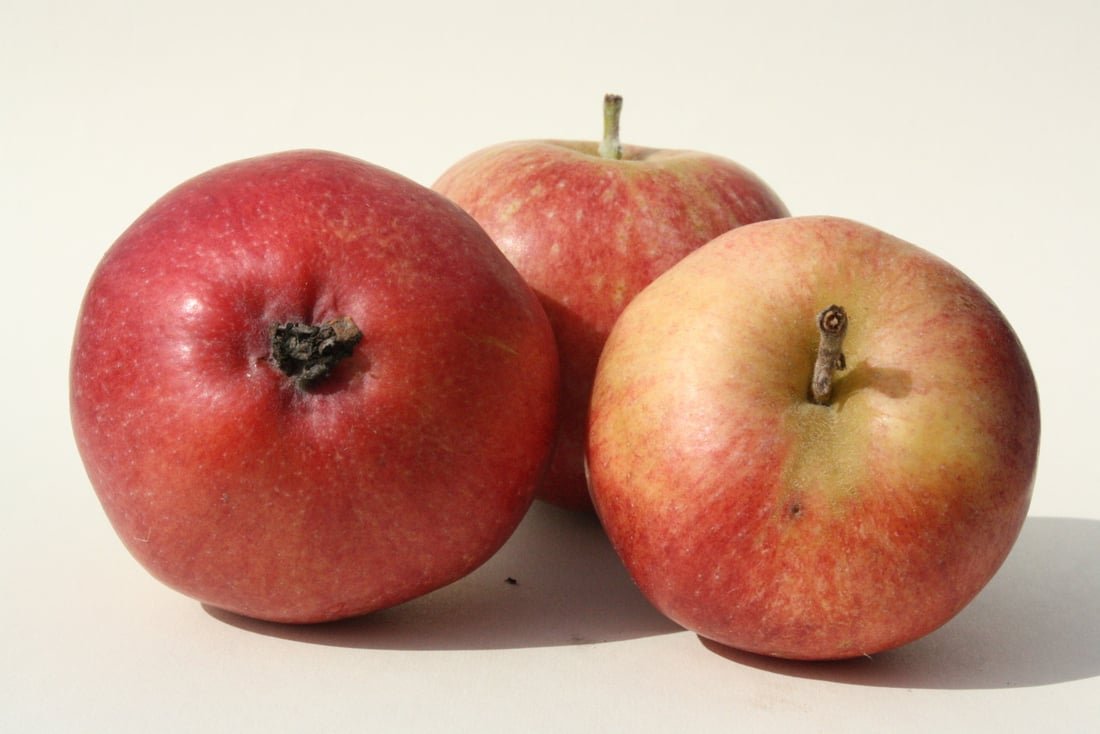
Also known as Wickson Crab. This is an Albert Etter variety. Tart, reddish, and striped, the Wickson parentage is a little obscure, but may be a cross between the Esopus Spitzenburg and the Newtown Pippin. Favored for crab apple jellies because of the high pectin content. It blossoms early so it is a good pollinator for other apples.
Categories: baking/saucing apple, dessert apple, cider apple
Tags: Heavy producer, Pollination Group C, Harvest period mid

A 1980s apples from the south these are one of the varieties that may carry apple farmers into the post climate change era. They clearly require less chill hours and they are beloved in the south because in an area with rampant fungal disease, they do well. These require very little attention to do well and are great for the novice grower. One of the best tasting early apples. Developed as part of the PRI breeding program.
Categories: baking/saucing apple, dessert apple
Tags: Pollination Group A, Disease-resistant, Heavy producer, Heat/low-chill tolerant, Harvest period early, Southern US roots
Airlie Red Flesh
Akane
Alexander (Aporte)
Alkmene
Almata, (red flesh)
Ambrosia
Amere de Berthecourt
Anna
Arkansas Black
Ashmead's Kernel
Baldwin
Belle de Boskoop
Berner Rosen
Blairmont
Blenheim Orange
Blue Pearmain
Braeburn
Bramley Seedling
Calville Blanc d'Hiver
Cameo
Centennial
Chehalis
Coles Quince
Corail (Pinova & Pinata)
Cornish Gillflower
Cortland
Cox's Orange Pippin
Dabinett
Devonshire Crimson Queen
Discovery
Dolgo
Duchess of Oldenberg
Dumelow's Seedling
Empire
Enterprise
Egremont Russet
Erwin Bauer
Esopus Spitzenberg
Fiesta
Foxwhelp/Fauxwhelp
Fuji - jubilee
Fuji - yataka
Gala
Giant Russian Crab
Gingergold
Glockenapfel
Gold Rush
Golden Delicious
Golden Noble
Granny Smith
Gravenstein
Grimes Golden
Hauer Pippin
Hawkeye
Herefordshire Redstreak
Hidden Rose, (red flesh)
Holstein
Honeycrisp
Hubbardston Nonsuch
Jonagold
Jonathan
Karmijn de Sonnaville
Kerr Crab
King of Tompkins
Kingston Black
Knobbed Russet
Lady
Lady Williams
Laxton Superb
Liberty
Lodi
Lubsk Queen
Lyman's Large Summer
Major Apple
McIntosh
Melrose
Mollie’s Delicious
Monark
Mother
Muscadet de Dieppe
Mutsu
Newtown Pippin
Niedzwetzkyana (red flesh)
Northern Spy
Opalescent
Oriole
Orleans Reinette
Parentene
Peasgood Nonsuch
Pierce Pasture
Pink Pearl
Porter’s Perfection
Queen Bee
Queen Cox
Queener Donut
Red Gravenstein
Red Spy
Redfree
Reverend W. Wilkes
Ribston Pippin
Rubinette
Rusty Coat
Sansa
Scarlet Surprise
Sekai Ichi
Senshu
St. Edmunds Pippin
Starr
Summer Rambo
Sundance
Suncrisp
Surprise
Sweet Delicious
Tremblett's Bitter
Washed Russet
Whitney crab
Wickson
Williams Pride
Winter Red Flesh
Wynoochee Early
Yarlington Mill
Yellow Bellflower
York
Zabergau Reinette
20 oz.





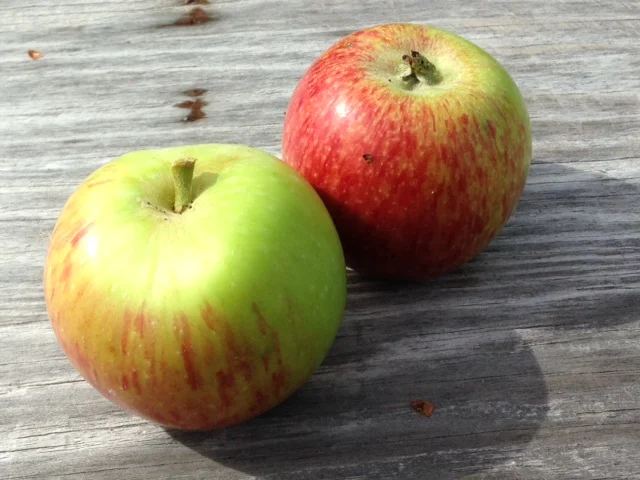












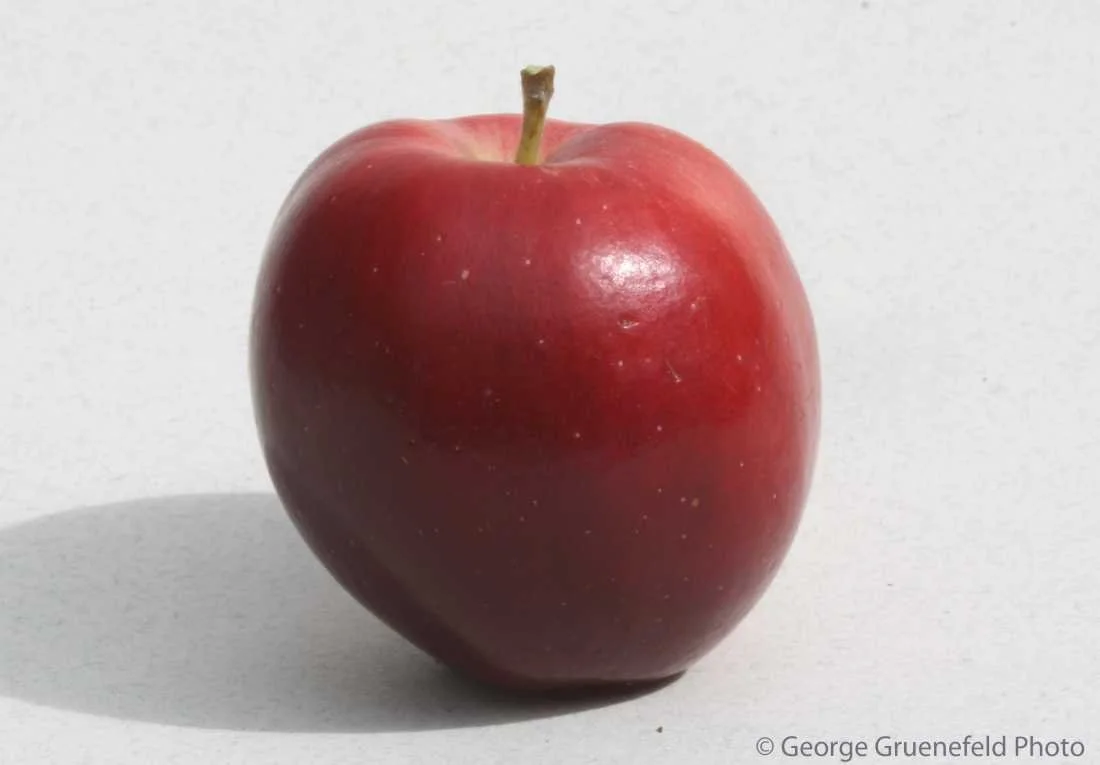








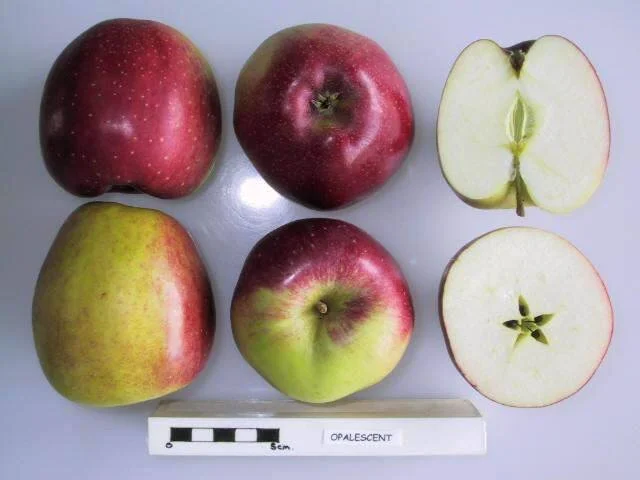

These are sold under the trade marked names of Hidden Rose and Mountain Rose. The original tree was found in the Airlie area of the Willamette Valley of Oregon. They are quite productive and vigorous but somewhat scab prone. These are more pink than red inside with nice pale green skin.
Categories: Red Flesh, dessert apple, cider apple
Tags: Heavy producer, Harvest period late, Pollination Group D